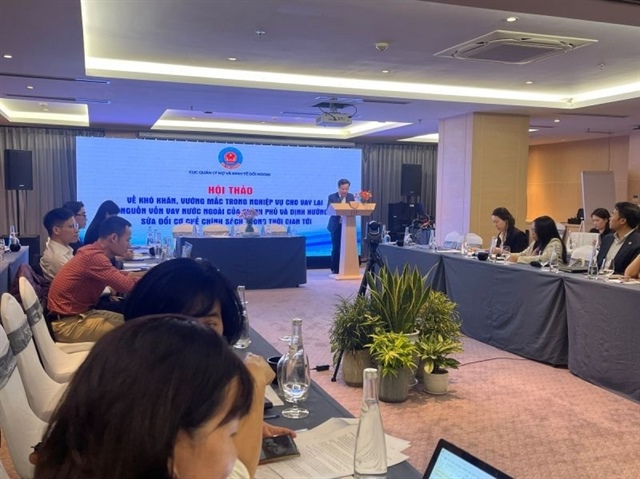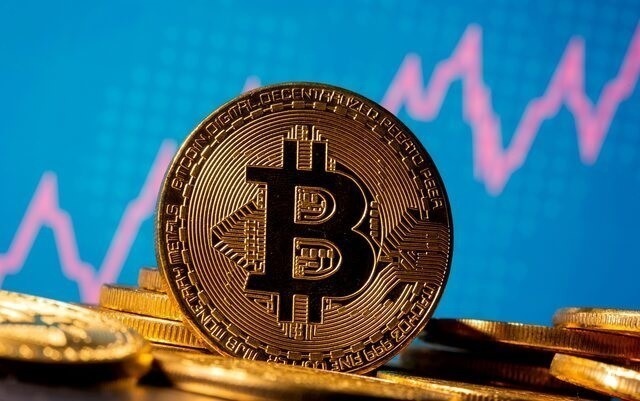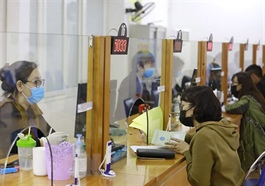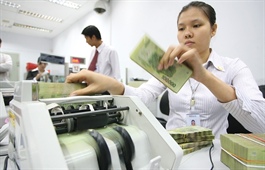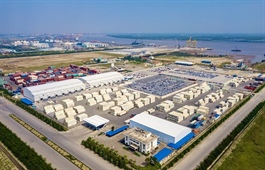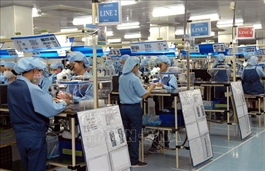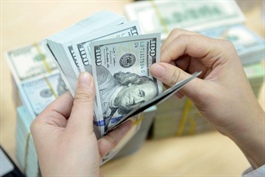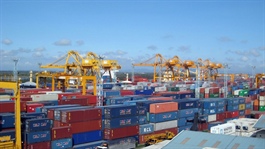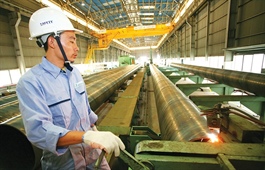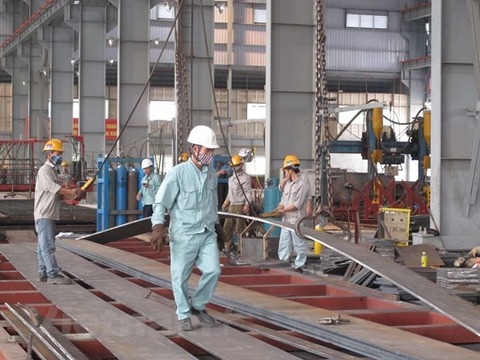Intra-ASEAN trade flourishing following mutual commitments
Intra-ASEAN trade flourishing following mutual commitments
Nearly five years have elapsed since the ASEAN Economic Community was established, and businesses in the region have gradually taken advantage of the bloc’s import tariff cuts to expand exports to Vietnam. Meanwhile, the country has also done the same with the bloc’s member states, helping to gradually truncate the years-long trade deficit between both sides.
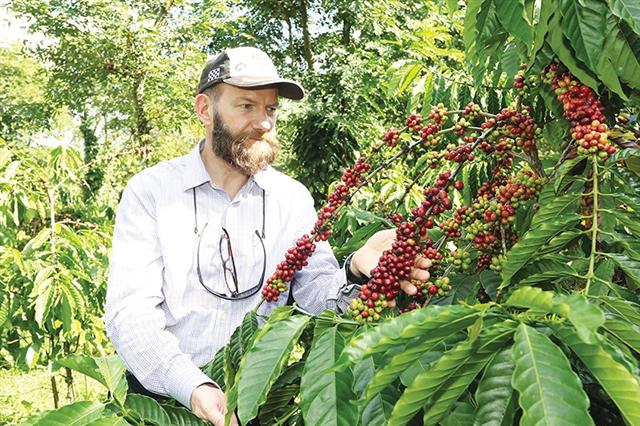
Coffee is one of the key staples exported from Vietnam into the ASEAN market each year. Photo: Le Toan
|
Just over a week ago, the Indonesian Embassy in Hanoi organised a webinar connecting Indonesian businesses with the Vietnamese coal market where the demand for the material is on the rise.
According to Ibnu Hadi, Ambassador of Indonesia to Vietnam, coal export from Indonesia to Vietnam is promising, with the total in 2019 from Indonesia being 15.4 million tonnes worth $868.6 million, up 10.06 per cent on-year.
Despite the aftermath of COVID-19, the export performance in the first five months of 2020 reached $407.7 million, up 3.82 per cent on-year. Vietnam’s coal demand is expected to total 40.31 million tonnes this year, 70.3 million tonnes by 2025, and 100 million tonnes by 2030, due to the high demand of energy for the thermal power plants.
“Many Indonesian businesses are considering Vietnam a lucrative business and investment destination,” the ambassador said. “They are operating not only in the coal sector, but also in other sectors such as spare car parts, education, property, infrastructure, plastic moulding, consumer products, supplementary foods, agriculture, and processing.”
One of the key reasons behind Indonesian businesses’ rising interest in Vietnam is that the country is strongly improving its investment and business climate, in addition to positive impacts of the ASEAN Economic Community (AEC) established in late 2015.
Over the past few years, many business delegations from Indonesia have come to Vietnam in search of business and investment opportunities. For example, PT. Asia Mina Sejahtera is seeking Vietnamese partners to co-operate in potential coffee projects.
“We’re expanding production, and we are looking for more supplies of input materials. Vietnam is our best market,” said Pranoto Soenarto, director of PT. Asia Mina Sejahtera.
Expanding ties
According to Vietnam’s General Statistics Office (GSO), many factors including tax slashes under the region’s commitments have helped Vietnam swell its trade and investment co-operation with not only Indonesia but also with many other regional member states.
Statistics from the Ministry of Planning and Investment showed that in the first six months of 2020, Vietnam expanded investments to some regional markets, such as Myanmar ($38.3 million), Laos ($24.7 million), Singapore ($19 million), and Cambodia ($15.7 million).
Meanwhile, as of June 20, total investment from ASEAN member states in Vietnam hit over $90.74 billion, with Singapore’s investment of over $54.74 billion, Thailand ($12.4 billion), Malaysia ($12.75 billion), Indonesia ($590.6 million), and the Philippines ($265.3 million).
For example, the first six months of 2020 saw Singapore making the largest investment in Vietnam with $4.32 billion registered for 121 newly-licensed projects, and Thailand with 16 newly-licensed projects registered at $134.6 million.
Notably, Singapore’s Delta Offshore Energy Pte. Ltd was in February licensed by the Mekong Delta province of Bac Lieu to implement a $4 billion project to develop a 3.200MW power plant run by liquefied natural gas. The plant will have four turbines of 750MW each and one with a capacity of 200MW, the former to go on stream at the end of 2023 and the latter in 2027.
After cultivating their investments in Vietnam, many of these ASEAN investors have also boosted import goods from their native nations into Vietnam, from which they have also exported goods back to their nations.
Currently, Southeast Asia is now Vietnam’s fourth-largest export market, after the US, the EU, and China. Vietnam’s export turnover to the region surged from under $1 billion in 1995 to $18.23 billion in 2015 and $17.45 billion in 2016. However, the figure ascended to $21.7 billion in 2017, $24.7 billion in 2018, and $25.3 billion last year, up 1.9 per cent on-year. In the first half of this year, the figure hit $11.1 billion, down 14.2 per cent on-year.
Meanwhile, Southeast Asia is also Vietnam’s third-largest import market. The country’s import turnover from other member states totalled $23.8 billion in 2015, $23.7 billion in 2016, $28 billion in 2017, $32 billion in 2018 and $32.1 billion last year. The figure touched $14.2 billion in the first six months of 2020, down 11.9 per cent on-year.
“Not only foreign enterprises in Vietnam, but Vietnamese ones have also been boosting their exports to ASEAN markets,” said a representative from the Ministry of Industry and Trade (MoIT) at a recent meeting between the government and localities. “This has been thanks to slashed import tariffs, besides enterprises’ improved awareness about ASEAN markets.”
Key export items by Vietnam to the ASEAN include farm produce like coffee, pepper, and cashews; mobile phones, computers, and other electronics items; steel, machinery, and vehicles; and textiles and garments, and also crude oil.
Nguyen Dang Manh, sales representative from Pouching Garment and Textile JSC, a Vietnam-China joint venture company in the northern province of Hung Yen, told VIR that if his firm directly exports its garments from China to the ASEAN, it would face an average import tax rate of 10-12-10 per cent, but when the firm exports from Vietnam, it can enjoy a far lower import tax rate of 2-3 per cent only, which will be fully removed in 2020.
Last year, the firm exported to Indonesia, Malaysia, and Singapore, with turnover rising 15 per cent on-year. However, the rate was down to -3 per cent in the first half of this year due to the pandemic forcing these markets to halt trade activities. “After COVID-19, we may expand to other markets in the region like Thailand and the Philippines,” Manh said.
Wide-ranging tax cuts
As one of the key pillars of the ASEAN Community, the AEC aims to create a tariff-free zone on all traded goods and services, while setting a timetable for the removal of non-tariff barriers regionwide.
According to the MoIT’s Multilateral Trade Policy Department, the ASEAN-6 nations – including the most developed economies of Brunei, Indonesia, Malaysia, the Philippines, Singapore, and Thailand - had erased 99 per cent of their import tariff lines in 2010.
Meanwhile, the remaining nations – Cambodia, Laos, Myanmar, and Vietnam – already removed 90 per cent of their import tariff lines in 2015. From 2018 to 2020, the remaining tariff lines will be removed by Vietnam for such products as automobiles and their spare parts, steel, motorbikes and bikes and their spare parts, wine, beer, plastics, paper, poultry, eggs, sectioned fruit, rice, processed meat, and sugar.
However, in order to benefit from such tariff reductions, goods must meet many conditions. For example, they have at least 40 per cent of their materials sourced from within ASEAN.
According to the Timber and Forest Product Association of Vietnam (Vifores), Vietnamese wooden product producers are finding it difficult to enter regional markets. In spite of tax cuts, they cannot expand exports to these markets due to their low demand for Vietnamese products. Meanwhile, the firms also import a large volume of materials, such as paint, nails, and chemicals worth millions of US dollars per year from regional member states.
Along with wooden products, many regional markets also have almost the same export goods as Vietnam. Moreover, Vietnam is considered a manufacturing base of many foreign enterprises while its supporting industries remain underdeveloped, so businesses have had to boost imports from overseas markets including Southeast Asia.
“That’s why the whole economy in general has still been suffering from a trade deficit with the ASEAN,” Vifores vice chairman Nguyen Ton Quyen told VIR.
The GSO reported that the deficit level was $6.3 billion in 2017, $7.3 billion in 2018, $6.8 billion, and $3.1 billion in the first half of this year. Notably, Vietnam has seen a deficit with Thailand, Malaysia, Singapore, Indonesia, and the Philippines.
Vietnam is also a net importer of many items indispensable for local production from ASEAN member states, such as petrol, plastics, and components for computers, electronics, machinery, and steel from these nations.
However, according to the GSO, Vietnam imports these items for local production, and then exports finished products to the world, including Southeast Asia. Thus, there should be no big worry about the trade deficit between Vietnam and the ASEAN, and one of the important things now is how to remove barriers facing businesses of Vietnam and other regional nations.
For instance, the Indonesian Embassy to Vietnam said that despite the great potential for Indonesia to boost coal exports into Vietnam, some obstacles remain.
“Challenges identified among others are logistic transportation during export, the long process of supply chain from the bidding process up to export, and the compulsory utilisation of national shipping lines and insurance,” read a release from the embassy.




